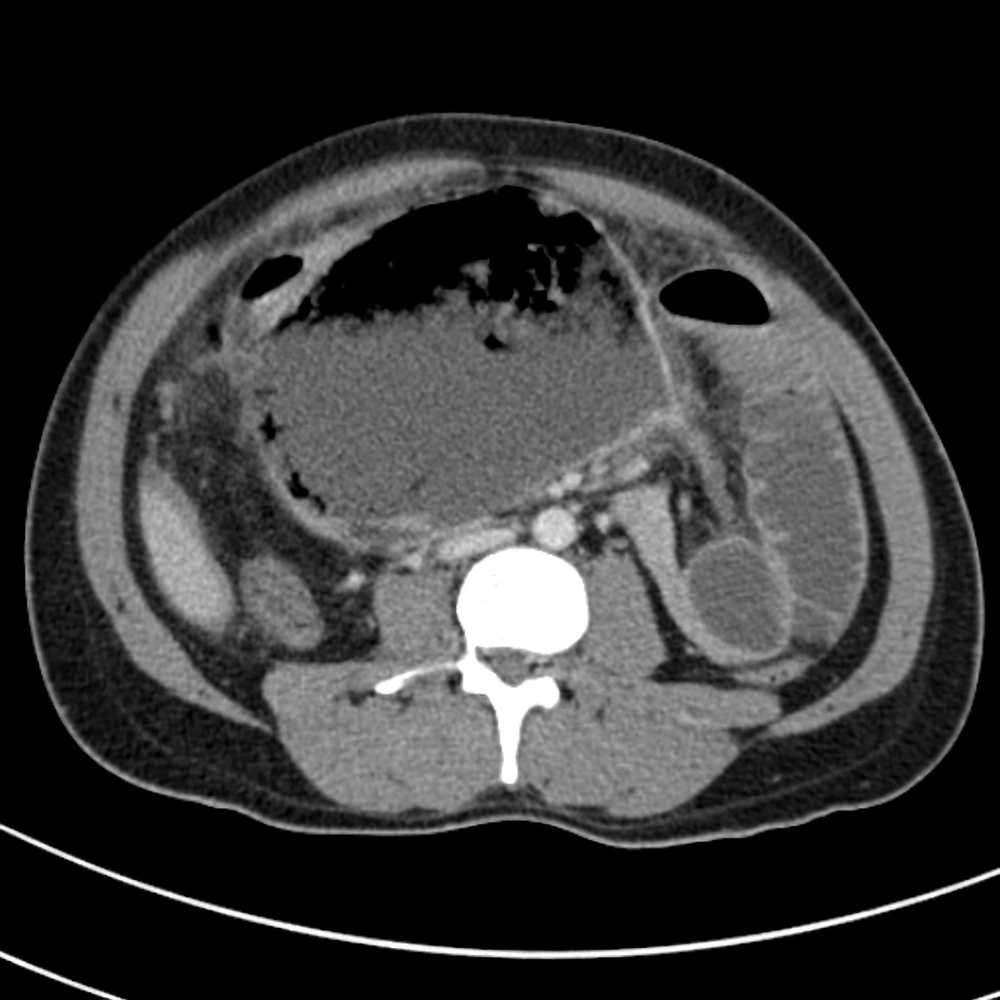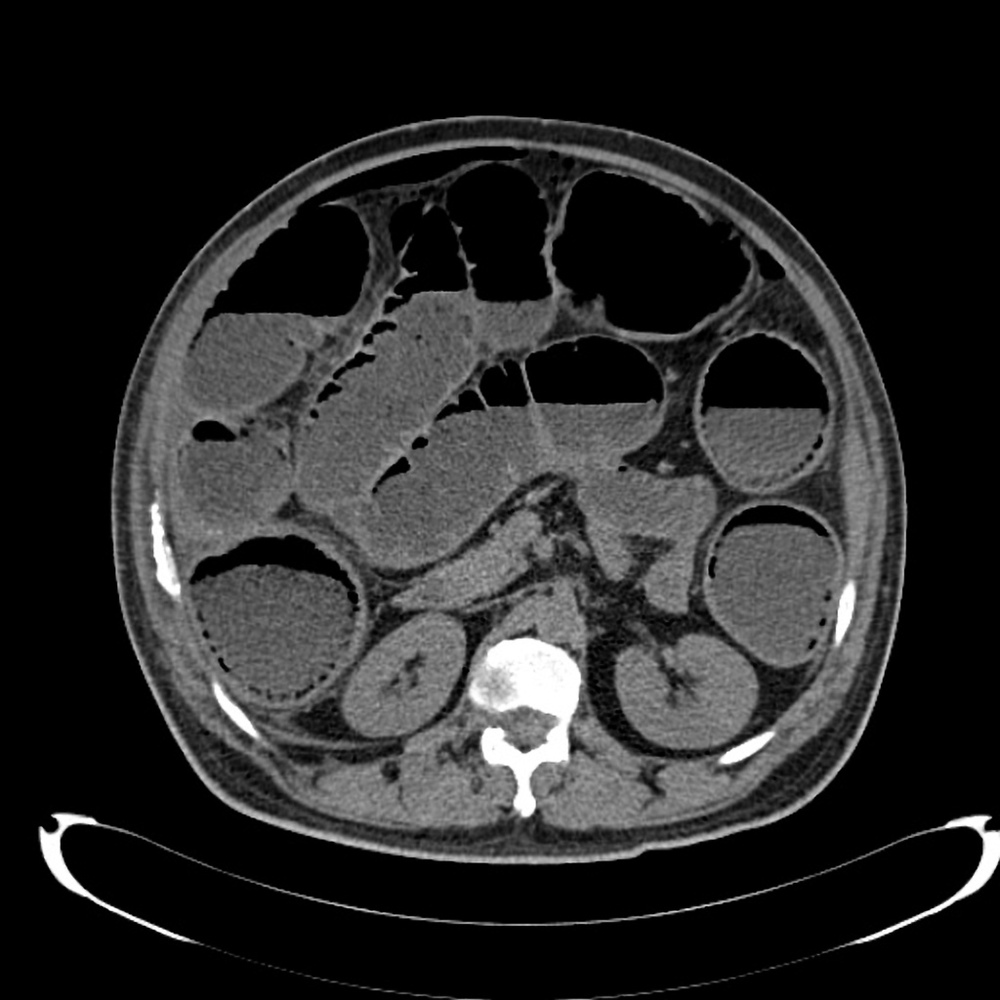Gastrointestinal perforation CT
Editor-In-Chief: C. Michael Gibson, M.S., M.D. [1]; Associate Editor(s)-in-Chief: Mohammed Abdelwahed M.D[2]
|
Gastrointestinal perforation Microchapters |
|
Differentiating gastrointestinal perforation from other diseases |
|---|
|
Diagnosis |
|
Treatment |
|
Case Studies |
|
Gastrointestinal perforation CT On the Web |
|
American Roentgen Ray Society Images of Gastrointestinal perforation CT |
|
Risk calculators and risk factors for Gastrointestinal perforation CT |
Overview
Chest computed tomography (CT) is done when fluoroscopy is equivocal, and there is persisting suspicion of perforation. Signs of perforation on abdominal CT scanning include extraluminal oral contrast, free fluid or food collections, discontinuity of the intestinal wall, localized peritoneal fat stranding, and Bowel wall thickening.
Gastrointestinal perforation CT
Chest CT
- Chest CT is done when fluoroscopy is equivocal, and there is persisting suspicion of perforation.
- Signs of chest CT scanning include:[1]
- Pleural or mediastinal fluid
- Pneumomediastinum or pneumothorax
Abdominal CT
- Signs of perforation on abdominal CT scanning include:[2]
- Extraluminal oral contrast
- Free fluid or food collections
- Discontinuity of the intestinal wall
- Localized peritoneal fat stranding
- Bowel wall thickening
- Fistula
- Intra-abdominal abscess


References
- ↑ Del Gaizo AJ, Lall C, Allen BC, Leyendecker JR (2014). "From esophagus to rectum: a comprehensive review of alimentary tract perforations at computed tomography". Abdom Imaging. 39 (4): 802–23. doi:10.1007/s00261-014-0110-4. PMID 24584681.
- ↑ Kim SW, Shin HC, Kim IY, Kim YT, Kim CJ (2010). "CT findings of colonic complications associated with colon cancer". Korean J Radiol. 11 (2): 211–21. doi:10.3348/kjr.2010.11.2.211. PMC 2827785. PMID 20191069.